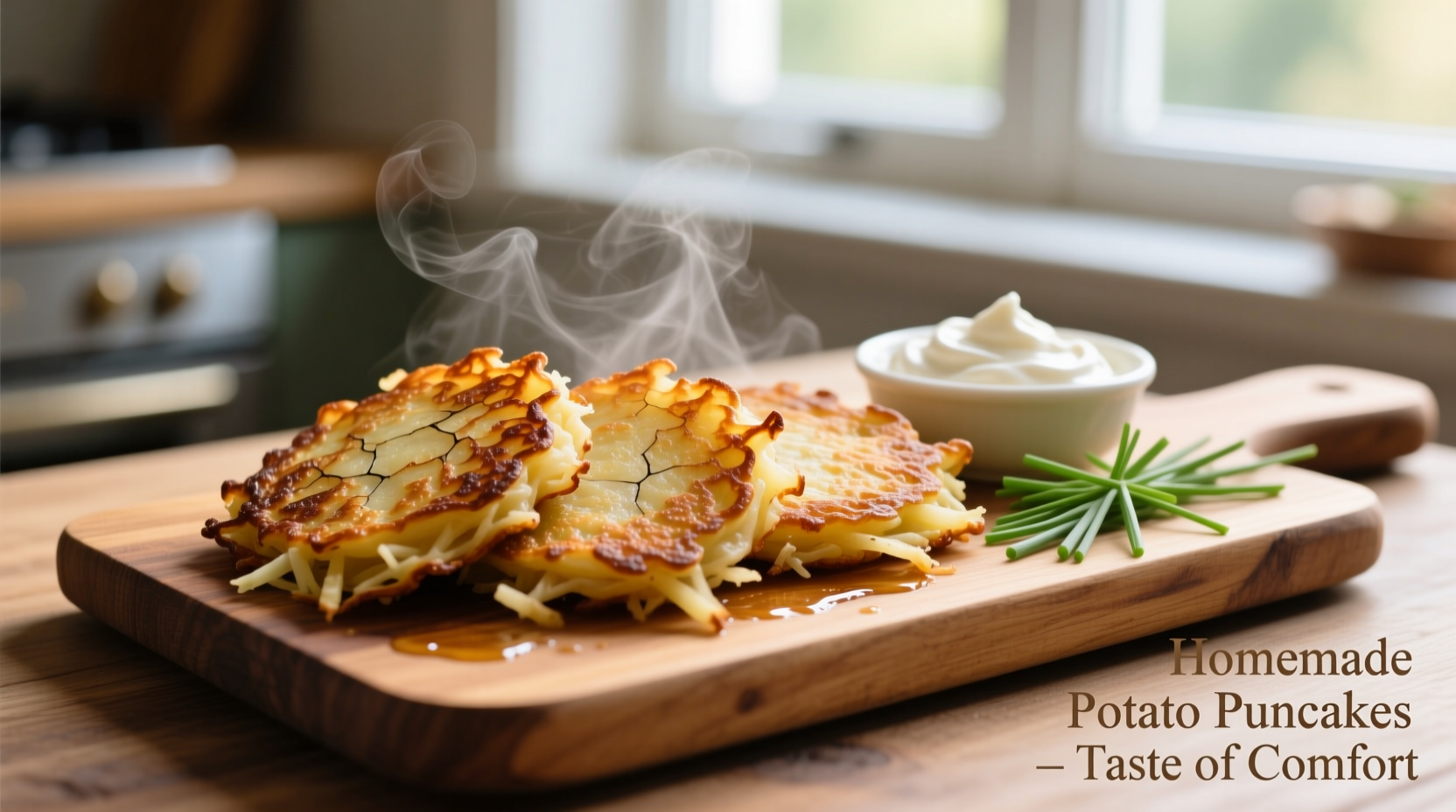Perfect potato pancakes start with the right potato variety, proper moisture control, and precise cooking temperature. This guide delivers professional techniques to achieve consistently crispy exteriors with tender interiors—no falling apart or sogginess. You'll learn essential preparation methods, global variations from Jewish latkes to Swiss rösti, and solutions to common cooking problems that plague home chefs.
The Essential Potato Pancake Foundation
Creating flawless potato pancakes begins with understanding the science behind the ingredients. Russet or Yukon Gold potatoes provide the ideal starch-to-moisture ratio for optimal texture. When grated, potatoes release starch that acts as a natural binder—critical for preventing disintegration during cooking. However, excess moisture causes steaming instead of crisping. Professional chefs recommend the double-wash technique: rinse grated potatoes in cold water until the water runs clear, then squeeze thoroughly using a clean kitchen towel.

Moisture Control: The Make-or-Break Factor
According to culinary research from the Culinary Institute of America, potato pancakes contain 78-82% water by weight. Even a 5% moisture variance dramatically impacts texture. Here's the professional approach:
- Grate potatoes using the large holes of a box grater or food processor
- Immediately submerge in cold water to prevent oxidation
- Drain and rinse until water runs clear (removes excess surface starch)
- Wrap in cheesecloth or clean towel and squeeze with firm, consistent pressure
- Measure final potato mass—add binding ingredients proportionally
This method ensures consistent results regardless of potato batch. Many home cooks skip the rinsing step, resulting in gummy interiors due to uncontrolled starch activation.
Global Potato Pancake Variations Compared
| Regional Variation | Key Ingredients | Distinctive Technique | Cultural Context |
|---|---|---|---|
| Latke (Jewish) | Potatoes, onions, egg, matzo meal | Shallow-fried in oil, traditionally for Hanukkah | Symbolizes oil miracle; served with applesauce or sour cream |
| Boxty (Irish) | Grated & mashed potatoes, buttermilk, flour | Griddled then pan-fried; often includes baking soda | Historically peasant food; regional variations across Ireland |
| Placki ziemniaczane (Polish) | Potatoes, egg, onion, flour | Thicker patties; often served with goulash | Common comfort food; regional recipes vary by province |
| Rösti (Swiss) | Potatoes only (sometimes butter) | Shaped in cast-iron skillet; pressed flat while cooking | Originally farmer's breakfast; now gourmet restaurant staple |
Step-by-Step Perfect Pancake Method
Follow this chef-tested sequence for restaurant-quality results:
Preparation Phase
Peel and grate 2 lbs (900g) potatoes using the large grating disc. Submerge immediately in cold water. Finely grate 1 medium onion (¼ cup). After draining potatoes, squeeze until no more liquid emerges—this moisture control step determines success. Combine with onion, 1 large egg, 2 tbsp matzo meal or flour, 1 tsp salt, and ¼ tsp black pepper.
Cooking Process
Heat ¼ inch of neutral oil (canola or avocado) in a cast-iron skillet to 350°F (175°C). Form 3-inch patties ½ inch thick using a measuring cup for consistency. Cook 3-4 minutes per side until deeply golden brown. Maintain oil temperature—fluctuations cause uneven browning and oil absorption. Drain on wire rack, not paper towels, to preserve crispness.
Troubleshooting Common Problems
Problem: Pancakes fall apart during cooking
Solution: Insufficient binding or excess moisture. Ensure thorough potato squeezing and use the correct egg-to-potato ratio (1 large egg per 2 lbs potatoes). For egg-free versions, increase matzo meal to 3 tbsp and add 1 tbsp aquafaba.
Problem: Soggy or greasy texture
Solution: Oil temperature too low or overcrowded pan. Use a thermometer to maintain 350°F and cook in batches with space between pancakes. Let oil reheat between batches.
Problem: Uneven browning
Solution: Inconsistent patty thickness or temperature fluctuations. Use a ⅓-cup measure to form uniform portions and avoid pressing down during cooking.
Context-Specific Technique Guide
Not all methods work universally—context matters for potato pancake success:
- High-humidity environments: Increase matzo meal by 25% and refrigerate mixture 15 minutes before cooking
- Egg-free versions: Replace egg with 3 tbsp aquafaba plus 1 tbsp ground flaxseed for binding
- Cast-iron vs. nonstick: Nonstick requires 25°F higher temperature for equivalent browning
- Make-ahead preparation: Raw mixture keeps 24 hours refrigerated; cooked pancakes freeze well for up to 3 months
Serving and Pairing Recommendations
Traditional pairings enhance authentic experiences while modern combinations offer creative twists. For classic presentations, serve Jewish latkes with applesauce and sour cream. Polish placki shine with mushroom sauce or goulash. Swiss rösti pairs beautifully with smoked salmon and fried eggs for brunch. Contemporary chefs increasingly pair potato pancakes with:
- Apple-fennel slaw for brightness against richness
- Horseradish crème fraîche for spicy contrast
- Smoked trout and dill for Nordic-inspired brunch
- Vegetarian mushroom stroganoff for hearty dinner option
For optimal texture, serve immediately after cooking. If preparing in advance, keep finished pancakes in a 200°F (95°C) oven on a wire rack—never covered, which creates steam and softens the crust.











 浙公网安备
33010002000092号
浙公网安备
33010002000092号 浙B2-20120091-4
浙B2-20120091-4